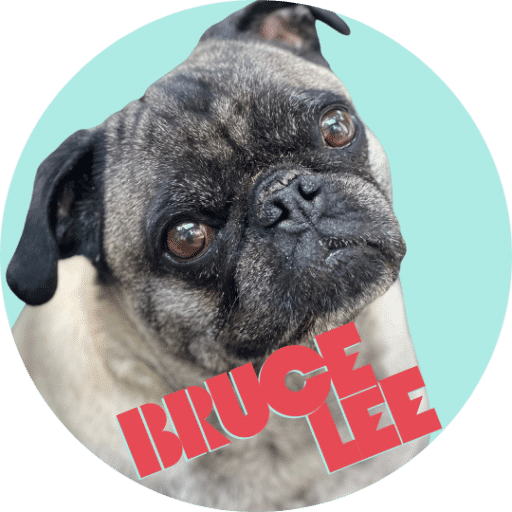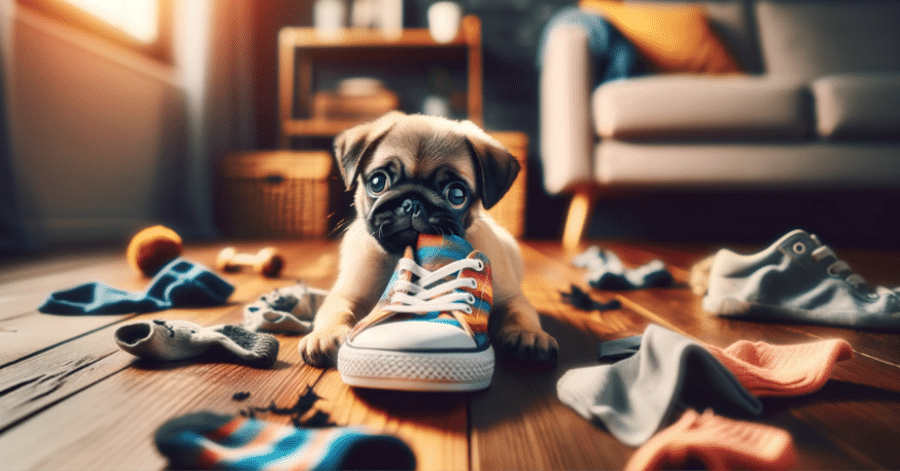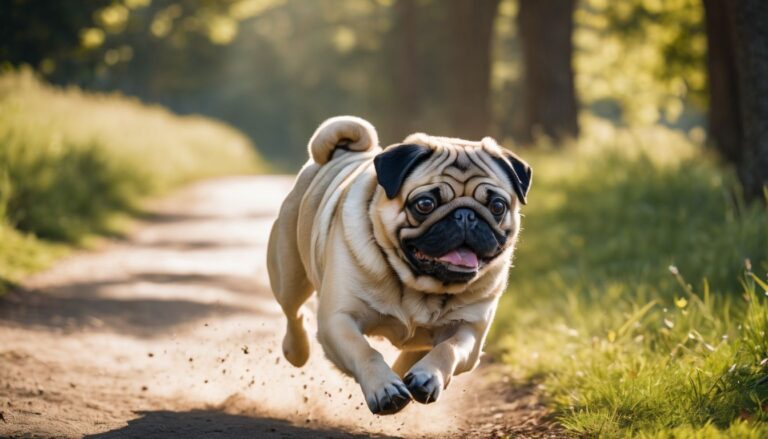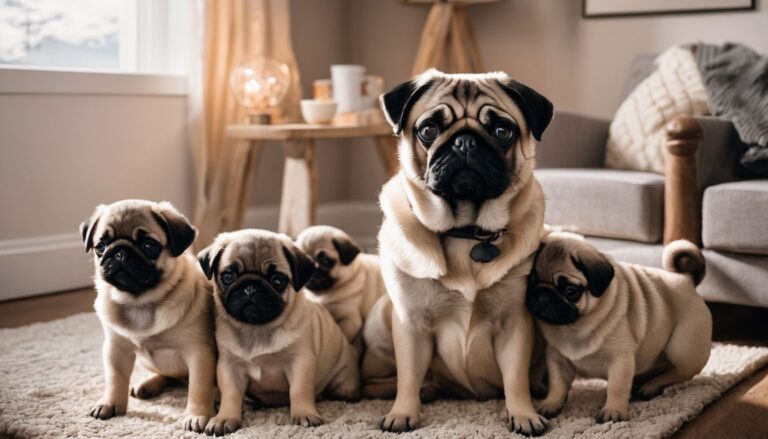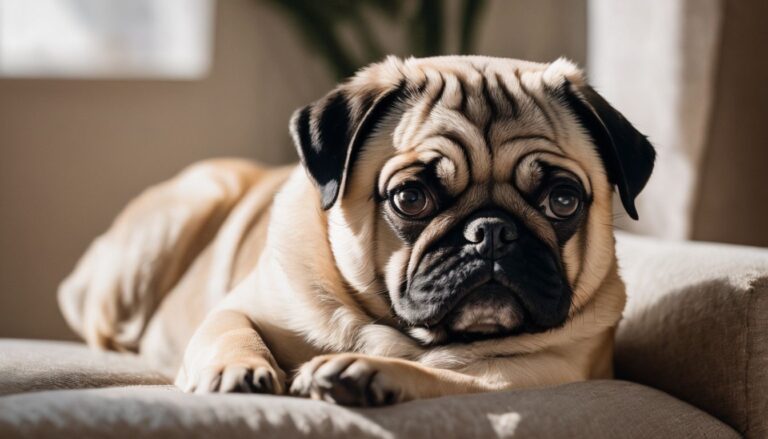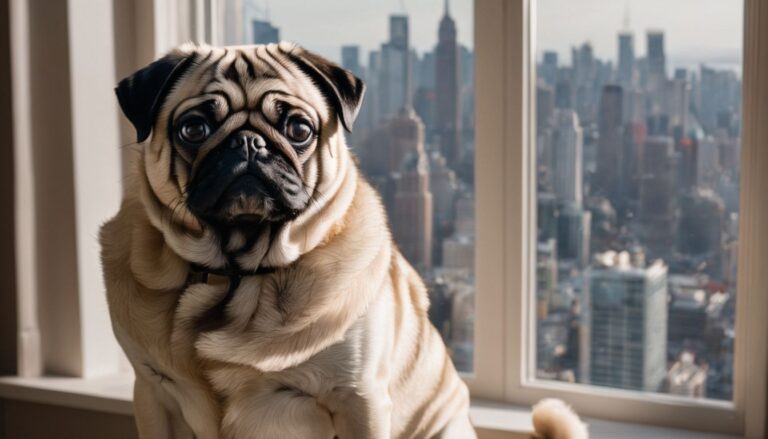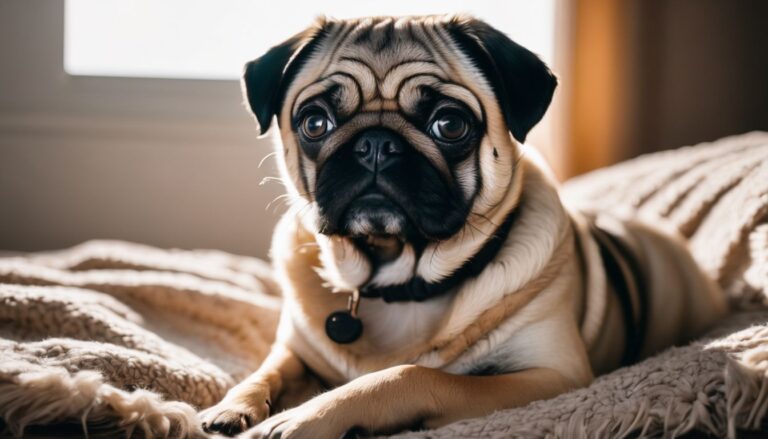Do Pugs Chew Everything? Unveil the Secrets!
Pugs, those compact bundles of joy, have a penchant for exploring the world mouth-first, often leading them to chew on various objects. This behavior, while entirely natural, turns problematic when it crosses into destructive chewing. Such undesirable habits not only wreak havoc on household items but can also impact a pug’s health and happiness.
We’ll delve into the reasons do pugs chew, distinguishing between innocuous and harmful habits. Grasping this difference empowers pug owners to guide their pets towards appropriate chewing outlets, ensuring a harmonious living environment. Addressing the root of destructive chewing requires insight, persistence, and a dash of creativity.
Key Takeaways:
- Understanding Pug Chewing: Knowing the distinction between natural and destructive chewing paves the way for resolving issues.
- Root Causes: Identifying triggers such as boredom, anxiety, or teething is crucial for effective intervention.
- Practical Solutions: Offering suitable toys and addressing underlying issues promotes a happy, healthy pet.
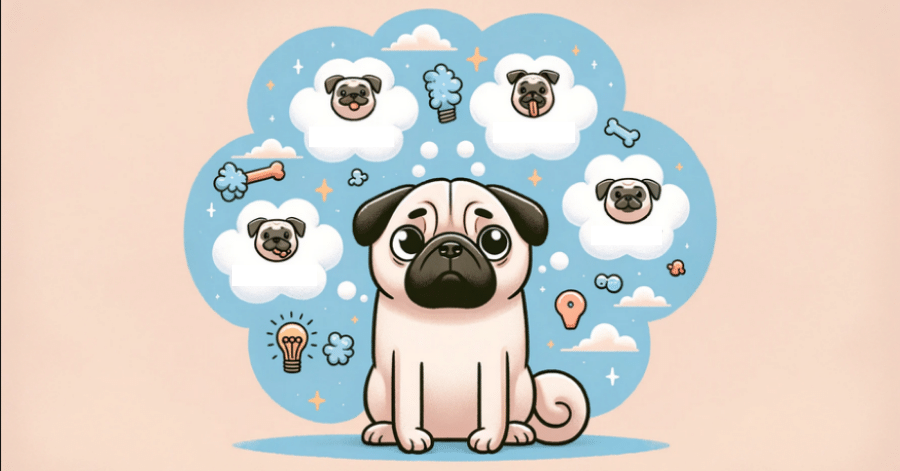
Understanding Pug Chewing Behavior
Chewing is a natural instinct for pugs, much like their canine counterparts. This behavior stems from curiosity and the intrinsic need to explore their surroundings. Chewing helps pugs relieve stress, handle boredom, and even alleviate discomfort during their teething phase. Not all chewing indicates a problem. Recognizing the difference between beneficial and harmful chewing is key.
Healthy chewing involves pugs engaging with toys or items designed for this purpose, supporting dental health and keeping them occupied. Destructive chewing, on the other hand, targets inappropriate items like furniture or shoes, often resulting from underlying issues such as separation anxiety, boredom, or lack of proper chew toys. Addressing this distinction helps maintain a happy and healthy environment for both pug and owner, directly addressing the concern of why do pugs chew.
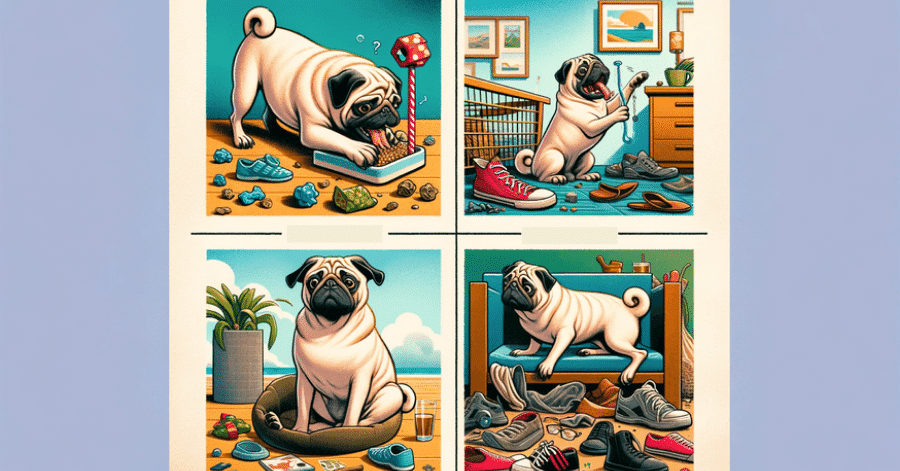
Reasons Behind Destructive Chewing
Pugs, like many dogs, experience periods where they engage in destructive chewing. This behavior often stems from boredom. Left alone, pugs may chew simply to stay engaged or to relieve pent-up energy. Teething is another significant factor, especially in puppies. As new teeth emerge, the discomfort can lead them to chew on anything they find soothing.
Anxiety, including separation anxiety, also plays a role. Pugs are social animals and can become stressed when isolated, leading to destructive chewing as a coping mechanism. Addressing these causes early can help curb this behavior, answering the concern of why do pugs chew, and maintain a happy, healthy environment for your pug.
Natural vs. Destructive Chewing
Pugs, like all dogs, explore their world through their mouths. This means chewing comes as naturally to them as barking or wagging their tails. Natural chewing can be beneficial, aiding in keeping their teeth clean and managing the discomfort of teething for puppies.
On the other side of the spectrum, we find destructive chewing. This behavior crosses the line from exploration to causing harm to household items, personal belongings, and even the pug’s own health and safety.
Destructive chewing often stems from issues like boredom, anxiety, or lack of proper chew toys. Recognizing the difference ensures owners can encourage positive chewing habits while inhibiting the negative, ensuring a balance between a pug’s natural instincts and the maintenance of a harmonious home environment, directly addressing why do pugs chew.
Signs of Destructive Chewing
Identifying when a pug engages in destructive chewing involves recognizing certain behaviors that veer away from normal play and exploration.
Some of these signs include:
- Damage to Household Items: finding chewed furniture, shoes, or personal belongings is a clear indicator.
- Chewing Inappropriate Materials: if your pug chews on materials that could cause harm, like electrical cords or poisonous plants, this is a concern.
- Injury to Mouth or Teeth: signs of bleeding or injury around the mouth could suggest your pug is chewing on items that are too hard or unsafe.
- Increased Agitation: excessive chewing can sometimes be a response to anxiety or stress, noticed by a change in their normal behavior.
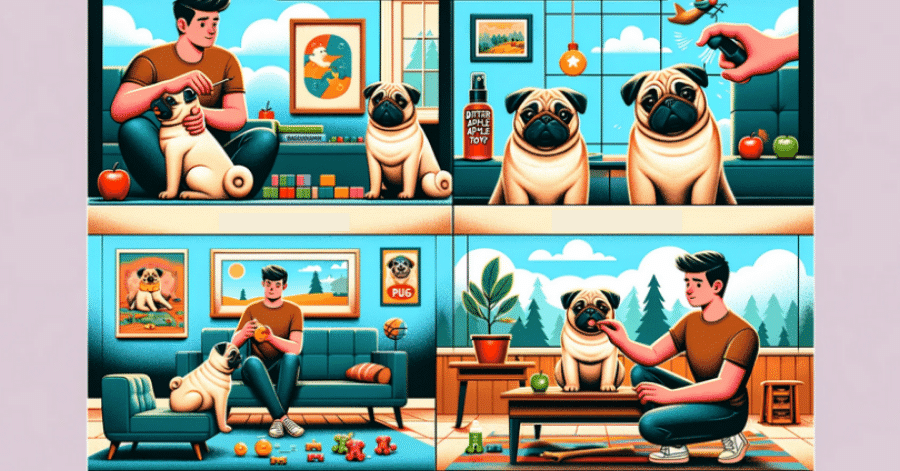
Do Pugs Chew – Prevention and Solutions
To address and prevent destructive chewing in pugs, we focus on a series of actionable steps. First, providing a variety of chew toys can capture their interest and deter them from gnawing on inappropriate items. These toys should be durable, safe, and engaging. Regularly rotate these toys to keep your pug intrigued and less likely to seek out non-toys for chewing.
Second, training plays a critical role. Teach your pug to understand which items are acceptable for chewing through positive reinforcement techniques. Whenever they choose a toy over a forbidden item, reward them. This reinforces the desired behavior, directly tackling the question of do pugs chew on inappropriate items. Third, examine the root causes of destructive chewing.
If boredom or separation anxiety is the issue, additional exercise or interactive playtime can help. For puppies going through teething, ensure they have access to suitable teething toys to soothe their gums. Addressing these underlying issues can significantly reduce instances of unwanted chewing behavior.
Choosing the Right Toys
Selecting the right toys for your pug involves careful consideration, especially since pugs tend to chew a lot. You must pick chew toys that can endure their biting while being safe. Start by checking the durability of the toy. If it feels too soft or seems like it could be torn apart easily, it’s not a good choice for a pug’s energetic gnawing. The toy needs to resist their chewing without breaking into hazardous pieces.
Always ensure the materials are non-toxic and safe for dogs. Many toys specify they’re made from pet-safe materials, but double-checking is wise. In addition, the size of the toy matters. Avoid anything small enough for your pug to swallow whole, as this could lead to choking or internal obstruction, considering how much do pugs chew.
- Examine the toy’s texture – Some textures can help clean your pug’s teeth while they chew.
- Supervise early interactions – Watch how your pug interacts with new toys to ensure they’re safe and engaging.
Following these guidelines will help protect your pug and keep them entertained safely.
Effective Training Tips
We need to guide our pugs in distinguishing their toys from household items, especially considering how frequently do pugs chew. Begin the training by introducing a specific set of toys and consistently using a unique name for each one. When your pug picks up something that isn’t their toy, calmly take it away and replace it with one of their toys, clearly stating its name. Praise them enthusiastically whenever they choose a toy on their own. This positive reinforcement makes the learning process enjoyable and effective. Keep practice sessions short but frequent to maintain their interest without overwhelming them.
Consider applying a safe, bitter-tasting deterrent on items they frequently chew but shouldn’t. This method, paired with the positive reinforcement of chewing on their toys, quickly helps them learn the correct behavior. Remember, patience and consistency are key in training. If you notice persistent issues despite these efforts, consult a professional trainer for tailored advice suited to your pug’s needs.
Addressing Underlying Issues
Destructive chewing in pugs often stems from deeper issues, including the natural inclination to explore their environment through chewing. Identifying these root causes can lead to a long-term solution. Boredom ranks high as a contributor, given how much do pugs chew due to their curious nature, requiring mental stimulation. Providing a variety of toys and rotating them regularly can keep their interest alive, making this a habit to prevent your pug from seeking alternative, undesirable chewing options.
Separation anxiety is another common trigger for why do pugs chew destructively. This emotional distress can lead to destructive behavior when pugs are left alone. Addressing this begins with creating a calm environment. Start with small absences, gradually increase the time you’re away, and use positive reinforcements to show that being alone is not a negative experience. If these strategies do not suffice, consider seeking advice from a professional.
- Rotate toys: Regularly introduce new toys to keep your pug engaged.
- Create a safe space: Designate an area where your pug feels secure when you’re not home.
- Professional help: Sometimes, an expert’s input is necessary to tackle separation anxiety effectively.
By addressing these underlying issues, you not only curb destructive chewing but also enrich your pug’s life, ensuring a happier and more content companion.
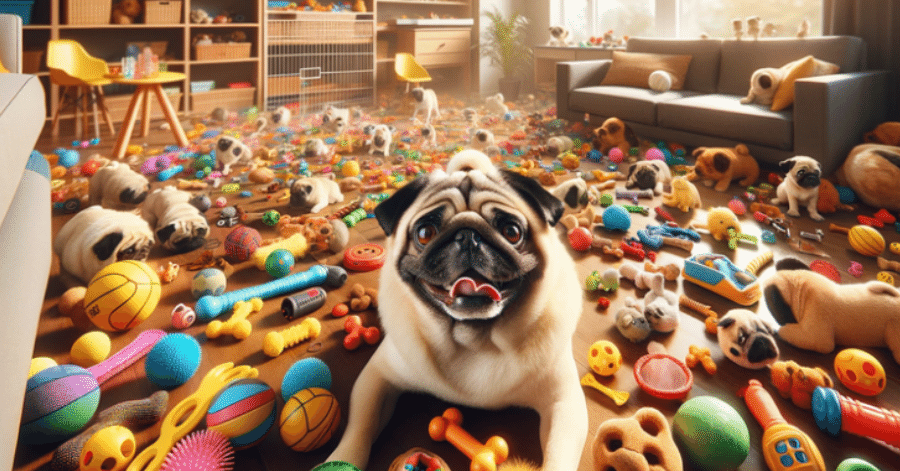
Rotating Toys to Combat Boredom
Boredom in pugs often leads to destructive chewing behavior, an issue many owners face. We’ve observed that a straightforward solution can largely mitigate this concern, especially considering how frequently do pugs chew. Rotating their toys keeps their environment fresh and engaging. This strategy prevents your pug from growing tired of the same items, sparking their curiosity and play drive with what seems like new toys.
This technique not only maintains their interest but significantly reduces the likelihood they’ll turn to inappropriate items for chewing out of boredom. Additionally, this approach supports the development of a healthy, exploratory behavior pattern, as they learn to look forward to the ‘new’ toys that appear in their rotation. In turn, this helps in managing their chewing habits in a positive and controlled manner, contributing to a happier, more content pug.

Pug Teething: Understanding and Solutions
Teething in pugs marks a period of discomfort and the urge to chew more frequently, raising the question among many owners: do pugs chew more during this time? This phase usually starts when they are a few weeks old and can last until they’re about 6 to 7 months. During this time, you might notice an increase in drooling, a mild fever, or a reduction in appetite. These symptoms occur as their new teeth emerge and begin to cause discomfort.
To help your pug during teething, focus on supplying them with soft, yet durable chew toys. These toys can alleviate the discomfort they feel. Freezing these toys before giving them to your pug can provide additional relief by soothing their sore gums. Additionally, maintaining a variety of chew toys not only prevents your pug from turning to inappropriate items to chew on but also keeps their interest piqued, reducing boredom.
Regular check-ups with your veterinarian can ensure that your pug’s teeth are growing in correctly, preventing potential dental issues later on. Dental chews designed specifically for puppies can also support dental health, removing plaque buildup while they satisfy their chewing urge. Remember, patience and understanding during this phase go a long way. Teething is temporary, and with the right approach, both you and your pug can get through it smoothly.
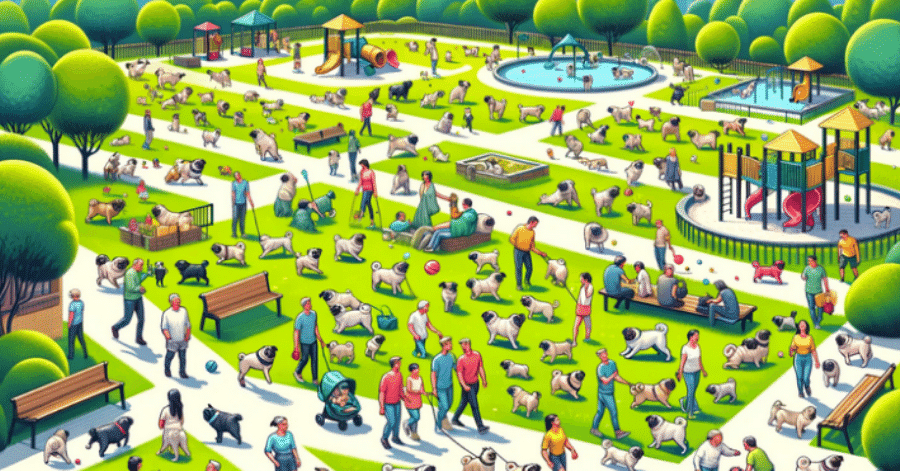
Reader Experiences and Questions
We’ve noticed from your feedback that many pug owners face similar hurdles with their furry companions’ chewing habits, particularly addressing the question: do pugs chew due to natural behavior or as a sign of a destructive problem? One frequently mentioned concern is discerning when chewing transitions from a harmless activity to a concern that needs intervention. Many of you have asked, “When does my pug’s teething end, and how can I prevent them from chewing on everything in sight?” Interestingly, several have shared success stories about redirecting their pugs’ chewing behavior towards appropriate toys and identifying signs of boredom or anxiety early on.
Others have pointed out the challenge of finding durable and safe chew toys that can withstand a pug’s enthusiastic biting. Questions like, “What toys are best for my pug’s dental health and amusement?” come up often. The community’s input has been invaluable in creating a list of toys and activities that keep our pugs engaged and happy without resorting to destructive chewing.
Additionally, some of you have raised concerns about behavioral issues stemming from separation anxiety and boredom. Solutions shared by the community, such as rotating toys and ensuring a comforting environment, have proven effective for many. This collective wisdom highlights the importance of understanding our pugs’ needs and behaviors, demonstrating that patience and consistent training can address most issues related to destructive chewing. The strength of shared experiences within our community serves as a vital resource for fostering well-behaved and happy pugs.
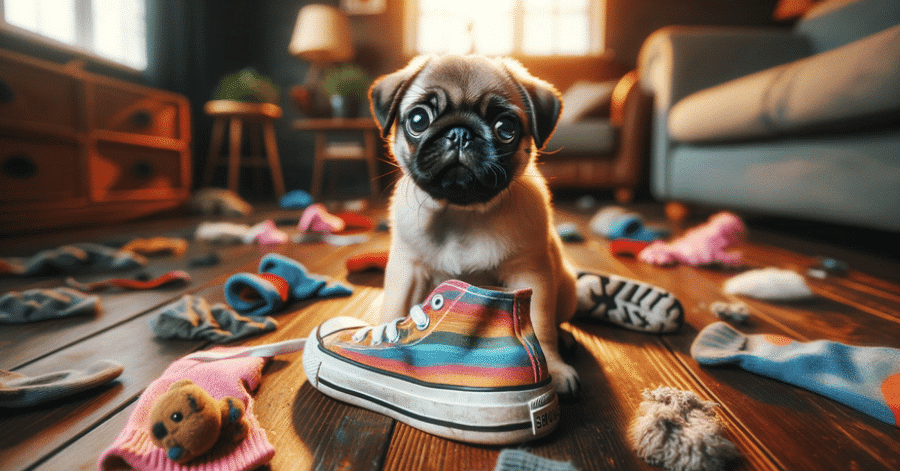
Towards a Happy, Healthy, and Obedient Pug
Addressing destructive chewing in pugs extends beyond the mere preservation of household items. This behavior, when not properly managed, stands as a barrier to achieving a deeper relationship between you and your pet. Understanding why do pugs chew and employing strategic interventions promotes an environment where your pug can thrive, be happy, and maintain optimal health. Moreover, these efforts contribute significantly to obedience training, setting a foundation for a well-behaved companion.
Your dedication to resolving destructive chewing ensures that your pug enjoys a high quality of life. Such issues, if left unchecked, can lead to dental problems, indigestion, or more severe health concerns. A proactive approach, involving the introduction of suitable chew toys, regular engagement, and setting clear boundaries, aids in diverting their natural chewing instincts towards more appropriate objects. This not only safeguards your belongings but also reinforces positive behavior patterns in your pug.
Moreover, recognizing signs of boredom, anxiety, or teething as potential triggers for destructive chewing allows for targeted solutions. By addressing these underlying issues, you engage in a more compassionate and understanding form of care, directly tackling the query of why do pugs chew. Offering a variety of toys, spending quality time together, and ensuring a stimulating environment can significantly diminish unwanted chewing. It’s about creating a happy balance where your pug’s needs are met, and their natural behaviors are directed in a safe and acceptable manner.
Training plays a pivotal role in managing destructive chewing. Establishing a reliable command to dissuade your pug from chewing on unsuitable items lays the groundwork for effective communication between you. Training sessions, built on patience and positive reinforcement, strengthen the bond with your pug, augmenting their eagerness to please and follow your guidance. These moments of learning are as rewarding for them as they are for you, fostering a sense of achievement and obedience in your pug.
In pursuit of a happy, healthy, and obedient pug, it’s vital to appreciate that every effort you make profoundly impacts their well-being, especially when addressing the question: do pugs chew? Your attentiveness to their chewing behavior, the solutions you deploy, and the patience you exhibit during training—all contribute to the development of a well-adjusted pet. The journey may present challenges, yet the rewards of companionship, unconditional love, and the joy of watching your pug grow into a disciplined and content member of your family are incomparable.
